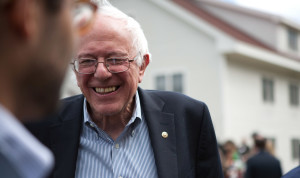Is Thought-Leadership an Outdated Cliche?
Some marketers are engaged in a vigorous debate between people who identify as “thought leaders” and those whose skins crawl when they hear the term.
Whether you love or hate the term, “thought leader”, marketing by showing leadership through content and letting people meaningfully engage with those ideas is undeniably powerful.
That type of marketing hooked me when I first tried it, as a 15-year-old 3rd-year high school student, and I’ve been using it ever since. First, I used it only to spread my ideas. Later, I also marketed products and services based on those ideas. And those ideas built me a decent following (and, eventually, a decent consulting practice)—sharing them through my books, articles, presentations, interviews, media coverage, etc.
This takes time and energy, and I know many people who do it better than me. But it certainly can be done. One of my book launches garnered over 1,000,000 short-term Google hits (for the book title, an exact-match four word string that wouldn’t show up in any other context). It’s the only time anything I’ve done got a million hits on Google.
I’ve even managed to help shift several mindsets at the international or national or local level.
My biggest success was changing the attitude about a proposed local mountaintop housing development from “this is terrible but there’s nothing we can do” to “of course we’ll win! The question is how.” This campaign took just over a year and used everything I knew in 1999-2000 about marketing AND community organizing (and the knowledge/labor of many others)—but the mindset shift took only four or five months. And that mindset shift created the conditions for our victory.

I also like to think I helped change the idea that business has to be evil. Of the five books I’ve published since 2003 (and the 10 since my first book came out in 1980), four show how business can profitably address issues ranging from business ethics to ending poverty—while reversing environmental destruction. I’ve given dozens of “Making Green Sexy”, “Impossible is a Dare,” and other talks on how business can be heroes.) And it’s been years since I’ve heard “business ethics? That’s an oxymoron!” When I first started talking about business ethics as a success strategy, I heard that false “wisdom” constantly.
I like to think my activity is part of WHY I no longer hear that horrible sentence.
Leading with ideas means finding others who will amplify those ideas. It’s not a coincidence that I actively seek out media coverage, endorsements, and more.
My latest book, Guerrilla Marketing to Heal the World has a blurb from Chicken Soup’s Jack Canfield on the front cover, another from Seth Godin on the back, and some 50 endorsements on the front pages. It has 4 guest essays from best-selling authors. These are some of the ways I’ve built credibility and gotten people interested, even though the book no longer has a current-year copyright.
One review of that book didn’t appear until 17 months after publication—and I’ve gotten reviews on books that were up to eight years old at the time. When you write about issues and do so with substance, your book can attract interest for years.
Of course, events can shift the relevance. If you try to repurpose articles on how to survive the coming Y2K crisis or books on the presidencies of Hillary Clinton, Mitt Romney, or Al Gore, thought leadership is not the image you’ll project. 😉


